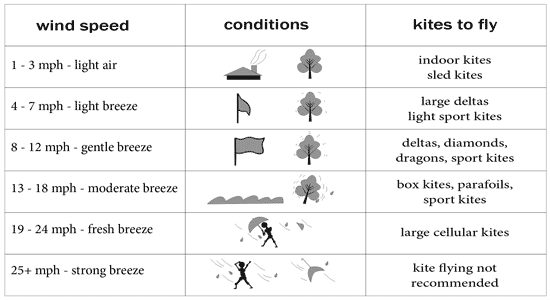Single line kites - Introduction to Single line kites and a few knots
Introduction to Single Line Kites
Single Line kites have been around for thousands of years. It is believed that the Chinese first started using kites approx 2500 years ago.
Single Line Kites
Single line kites are designed to be stable in medium winds and are the easiest for younger children and adults to fly. Kite flying can be enjoyed any time of year, all that is needed is a clear space such as a grassy field or the beach, a breeze at your back, and the right kite for the conditions. Single line kites are attached to one piece of string (known as line, hence "single line kite") and once airborne they simply float in the sky. Single line kites come in a variety of shapes and sizes - diamond, delta, box and parafoils are the most usual types. Most kites have one or two rods (known as spars) made of wood, plastic, fibreglass, or carbon fibre to keep the fabric (called the sail) taut and give the kite some aerodynamic shape.
Larger kites often fly in lighter winds because they have a larger surface area exposed to the wind giving them the ability to fly in lighter wind conditions. Diamond shapes and delta shapes appear to be the traditional style of kites that often bring back fond childhood memories of kite flying. Box kites, designed to be stable in strong winds can be quite powerful at times and are capable of lifting loads. Parafoils are soft kites they have no rods or frame to them but are durable and very convenient. Most modern kites are now made with high tech materials and can be very efficient flying machines.

A few simple knots that we use to fasten our equipment:
The Overhand Knot
The basic Overhand Knot is most frequently used to create a stopper knot in kite line, especially for kite bridles. It is also the basic knot used when sleeving higher-end Stunt Kite Spectra ® linesets. Though it's not critical, it is good practice to lock the working end of your kite line with a second simple overhand knot as shown below in the final 2 steps.
The Larkshead Knot
Without question the most commonly used knot by kite flyers, the Larkshead Knot is used to attach kite line to the bridle of many single-line kites and dual-line stunt kites. It also comes in handy to attach your kite line to some stunt kite wrist straps.

Attaching Stunt Kite Line-sets to Wrist Straps - Many stunt kite wrist straps come with a short loop of chord with an overhand knot stopper to attach their line-sets to. In this case, you would use a Larkshead Knot as show above to attach the kite line. But many of the current wrist straps today come with a plastic or metal ring (often triangular) for kite line attachment. The diagram below shows how to create a Larkshead Knot for use with these modern wrist straps.

The Fisherman's Clinch Knot
For single-line kites, it is often helpful to attach swivels to your kite line to help reduce the tendency for line to get twisted while in flight, which will ease the retrieval of your kite. The Fisherman's Clinch Knot is the most reliable way to attach a swivel, and maintains most of your kite line's strength. Some stunt kite flyers also like to use swivels to attach their kite line, though this is not common practice with seasoned flyers.

Prusik Knot

 Prusik knot is a kind of double lark's head knot.
Prusik knot is a kind of double lark's head knot. Make a loop of line using an over hand knot. Attach the loop to a straight line with lark's head knot, and continue making one or two (recommended) more twists around instead of one. Make tight and tidy. The knot should still slide on the straight line. Bend the Prusik knot to U-shaped and it locks.
Here is a chart that will help you to determine just which type of kite to fly to match the conditions.
